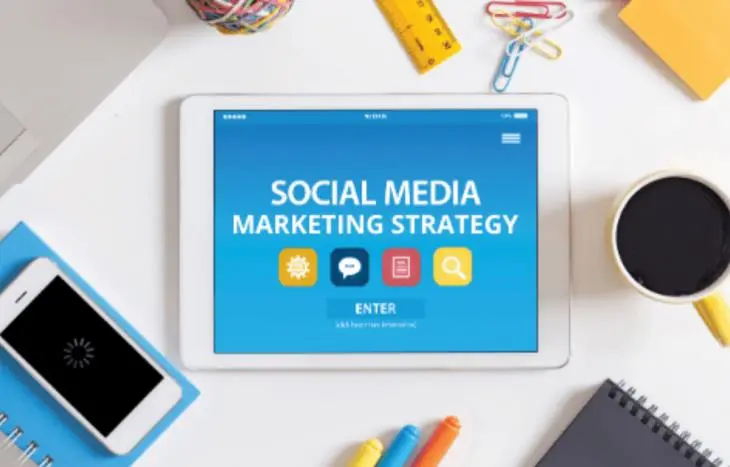Social media has become an indispensable part of inbound marketing strategies. With billions of active users worldwide, platforms like Facebook, Instagram, LinkedIn, TikTok, and Twitter serve as powerful tools for businesses to connect, engage, and build meaningful relationships with their target audience.
Inbound marketing thrives on creating value, fostering trust, and drawing customers in rather than aggressively pushing products – and social media is the perfect vehicle for achieving these goals.
The Role of Social Media in Inbound Marketing
Social media platforms act as bridges between businesses and their potential customers. Here’s how:
Also Read
1. Attracting the Right Audience
Inbound marketing is about pulling in the right people, and social media allows businesses to target their audience based on demographics, interests, behaviors, and location. For instance:
- Facebook Ads Manager lets businesses create campaigns aimed at specific groups.
- Instagram’s Explore Page showcases content to users based on their interests. This targeted approach ensures that the right message reaches the right audience.
2. Building Brand Awareness
A strong social media presence increases visibility. By sharing valuable content, engaging posts, and updates, businesses can showcase their expertise and establish themselves as trusted authorities in their industry.
3. Driving Traffic to Websites
Social media is a significant driver of website traffic. Links in posts, stories, and bios can direct users to blog articles, landing pages, or e-commerce platforms, seamlessly moving them through the inbound marketing funnel.
4. Encouraging Engagement
Social media platforms foster two-way communication. Customers can comment, share, or ask questions, creating opportunities for businesses to:
- Build trust by addressing queries.
- Collect feedback to improve products or services.
- Foster loyalty through meaningful interactions.
5. Amplifying Content Reach
Inbound marketing relies heavily on quality content. Social media extends the reach of this content by encouraging sharing among users.
Viral posts, shares, and likes can exponentially grow a brand’s visibility.
Why Social Media is Essential for Inbound Marketing Success
1. Cost-Effective Strategy
Creating and sharing content on social media is significantly cheaper than traditional advertising.
Even paid campaigns on platforms like Facebook and Instagram are cost-efficient, allowing businesses to allocate their marketing budgets effectively.
2. Builds Long-Term Relationships
Inbound marketing focuses on fostering relationships, not just making one-time sales.
Social media helps brands stay connected with their audience through regular updates, behind-the-scenes content, and personalized interactions.
3. Provides Valuable Analytics
Social media platforms offer built-in analytics tools to measure performance. Metrics such as reach, engagement, and conversions provide insights into:
- What type of content resonates with the audience.
- The best times to post for maximum visibility.
- Which demographics are most interested in the brand.
4. Supports Content Creation and Distribution
Social media platforms are excellent for repurposing content. A single blog post can be turned into:
- An infographic for Instagram.
- A discussion thread for Twitter.
- A how-to video for TikTok or YouTube. This multi-platform strategy ensures that content is seen by a broader audience.
5. Humanizes the Brand
Social media allows businesses to show their personality, values, and culture. This human touch makes the brand relatable and builds emotional connections with the audience, which is at the heart of inbound marketing.
Social Media Tactics for Inbound Marketing
1. Create Quality Content
The foundation of any inbound strategy is high-quality content. On social media, this includes:
- Educational Posts: Tutorials, tips, or FAQs.
- Engaging Content: Polls, quizzes, or user-generated content.
- Promotional Content: Special offers or product launches.
2. Use Visuals Effectively
Social media is a visual medium. High-quality images, videos, and infographics grab attention and increase engagement.
3. Leverage Hashtags
Hashtags improve discoverability by categorizing content. For example, a fitness brand might use hashtags like #HealthyLiving or #WorkoutGoals to reach their target audience.
4. Engage Actively
Responding to comments, answering messages, and participating in discussions shows that the brand values its audience.
5. Run Social Media Campaigns
Campaigns such as giveaways, challenges, or user-generated content initiatives can create buzz and draw more users into the inbound funnel.
6. Collaborate with Influencers
Partnering with influencers who align with the brand can help businesses reach new, relevant audiences.
Case Studies: Successful Social Media Inbound Marketing
1. Starbucks
Starbucks uses platforms like Instagram and Twitter to share user-generated content, promote seasonal beverages, and engage directly with customers.
This strategy fosters loyalty and keeps their audience engaged year-round.
2. HubSpot
As a leader in inbound marketing, HubSpot uses LinkedIn and Twitter to share valuable resources, blog posts, and webinars. Their consistent value-driven approach attracts professionals looking for marketing solutions.
3. Glossier
Glossier leverages Instagram to connect with its audience by sharing tutorials, reposting customer content, and showcasing behind-the-scenes glimpses of their products. This approach has helped the brand grow a loyal community.
Social media is a cornerstone of modern inbound marketing strategies. Its ability to attract, engage, and convert audiences while fostering long-term relationships makes it indispensable for businesses of all sizes.
By leveraging the power of social media, brands can not only amplify their message but also build a loyal customer base that continues to grow organically.
In today’s digital age, integrating social media into inbound marketing is not just an option – it’s a necessity.















